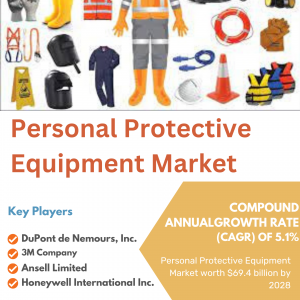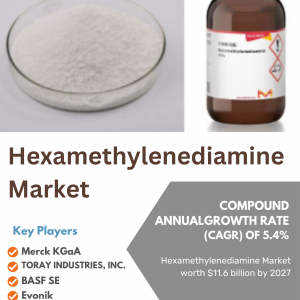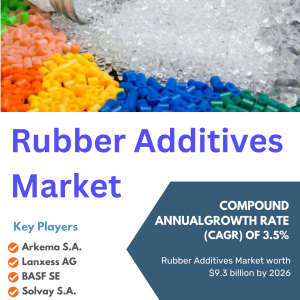The report "Piezoelectric Ceramics Market by Type (Barium Titanate, Potassium Niobate, Sodium Tungstate, Lead Zirconate Titanate), End user (Consumer Electronics, Industry & Manufacturing, Automotive, Medical), and Region - Global Forecast to 2028", is projected to reach USD 1.8 billion by 2028, at a CAGR of 4.9% from USD 1.4 billion in 2023.
The major drivers for the piezoelectric ceramics market are rising demand of piezoelectric energy harvesting technology, rising demand from medical sectors, and growing need for high-performance sensors. The high cost of piezoelectric ceramics material is the major restraint in this market. Opportunities for the market include rapid innovation in automotive industry.
Download PDF Brochure: https://www.marketsandmarkets.com/pdfdownloadNew.asp?id=146130307
“Barium titanate segment is projected to be second fastest CAGR by type, in terms of value, during the forecast period.”
Barium Titanate is gaining traction as a lead-free alternative to conventional piezoelectric materials like Lead Zirconate Titanate (PZT). As environmental concerns and regulations regarding lead-based materials continue to rise, there is a growing demand for environmentally sustainable piezoelectric ceramics. Barium Titanate emerges as a viable solution for manufacturers and end-users who prioritize the use of lead-free materials, offering a suitable alternative. Barium titanate offers a wide range of operating temperatures, providing versatility in different environments. It has a Curie temperature (the temperature at which the material loses its ferroelectric properties) around 120-130°C, which allows it to be used in a broad temperature range compared to other piezoelectric ceramics. This characteristic expands the potential applications of barium titanate in industries that require operation in harsh or extreme temperature conditions.
“Industry & manufacturing segment is projected to be second fastest CAGR by end use industry, in terms of value, during the forecast period.”
The demand for piezoelectric ceramics in the industry & manufacturing industry is witnessing a significant upsurge due to the growing demand of high-performance sensors. The industry and manufacturing sector often require sensors and actuators for various applications. Piezoelectric ceramics are widely used as sensors to measure parameters such as pressure, force, and vibration, providing precise and reliable data for process control and monitoring. Additionally, they are utilized as actuators for precise positioning, vibration control, and flow regulation in industrial machinery and equipment. The increasing automation and need for efficient control systems in the industry drive the demand for piezoelectric ceramics.
Speak to Analyst: https://www.marketsandmarkets.com/speaktoanalystNew.asp?id=146130307
“North America is expected to be the third largest growing market for piezoelectric ceramics during the forecast period, in terms of value.”
The market for electric and hybrid vehicles is rapidly growing in North America. Piezoelectric ceramics are used in these vehicles for various applications, including battery management systems, regenerative braking systems, and acoustic sensors for detecting pedestrian presence. The increasing adoption of electric and hybrid vehicles in North America creates a significant demand for piezoelectric ceramics. The US is the second-largest automotive market, globally, after China. The automotive industry in the country is one of the largest globally. In 2021, vehicle production reached 9.1 million, as per the International Organization of Motor Vehicle Manufacturers (OICA). North America has a well-established automotive industry that focuses on advanced technologies and improved vehicle performance. Piezoelectric ceramics find applications in areas such as fuel injectors, automotive sensors, and active suspension systems, providing benefits such as fuel efficiency, enhanced safety features, and improved driving experience. The demand for such technologies in the automotive sector has contributed to the growth of piezoelectric ceramics in North America.
New product launches and expansions are the major growth strategies adopted by the key players in the market. The key global players in the piezoelectric ceramics market include KYOCERA Corporation (Japan), CeramTec GmbH (Germany), CTS Corporation (US), Murata Manufacturing Co., Ltd (Japan), TDK Corporation (Japan), Physik Instrumente (PI) GmbH & Co. (Germany), APC International, Ltd (US), L3Harris Technologies, Inc (US), HOERBIGER Motion Control GmbH (Germany), and Piezo Technologies (US).
KYOCERA Corporation
KYOCERA Corporation is a leading manufacturer of fine ceramics. The company's expertise in ceramic materials and advanced manufacturing processes has enabled it to produce reliable and precise piezoelectric ceramic components that meet the demanding requirements of various industries. The company provides two types of piezo device structures, one is a single-plate type, and the other is a multi-layer type, both of which are made of PZT ceramics (lead zirconate titanate). The company has a widespread geographic presence and comprises more than 294 subsidiaries globally.
Inquire Before Buying: https://www.marketsandmarkets.com/Enquiry_Before_BuyingNew.asp?id=146130307






